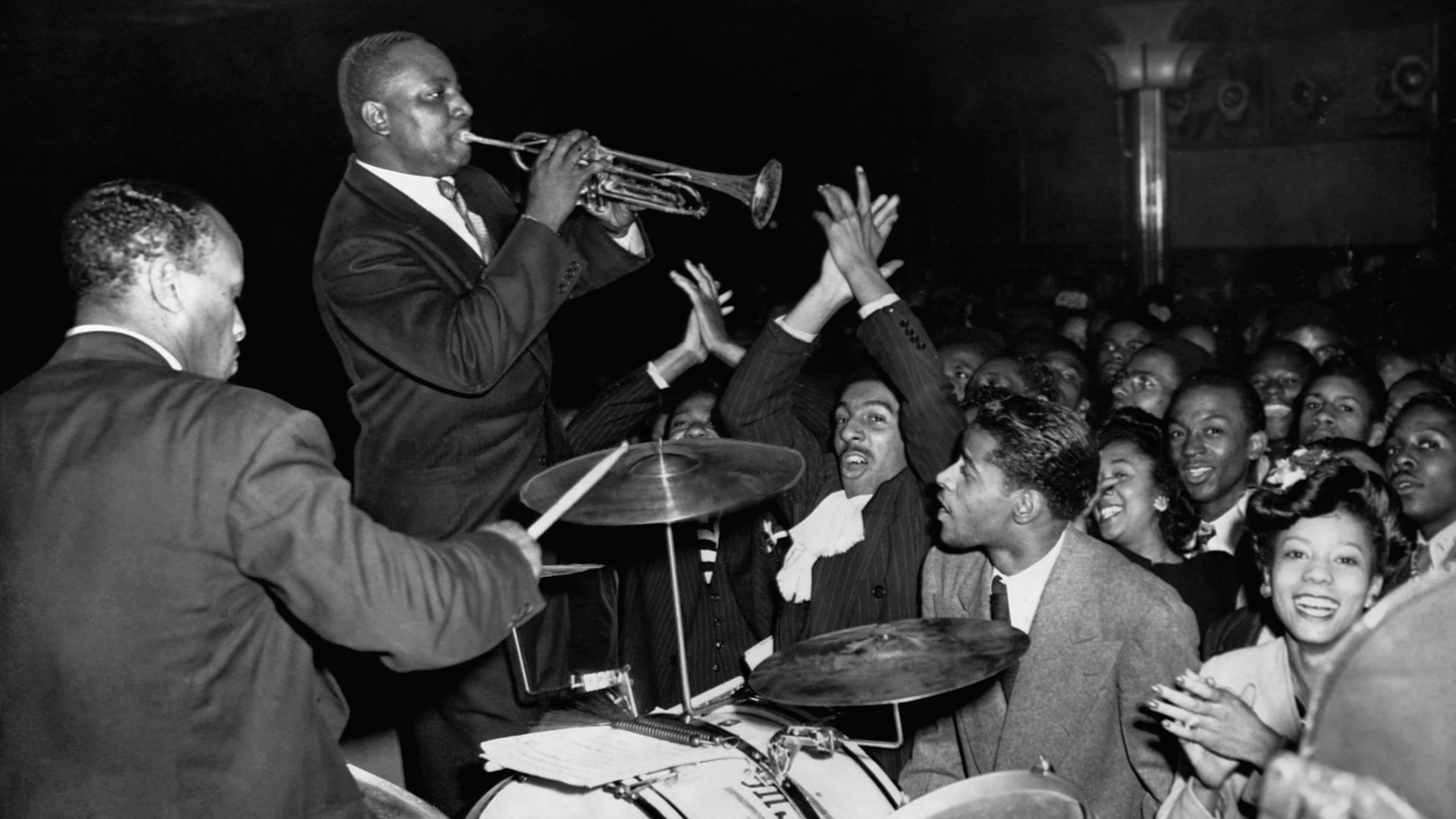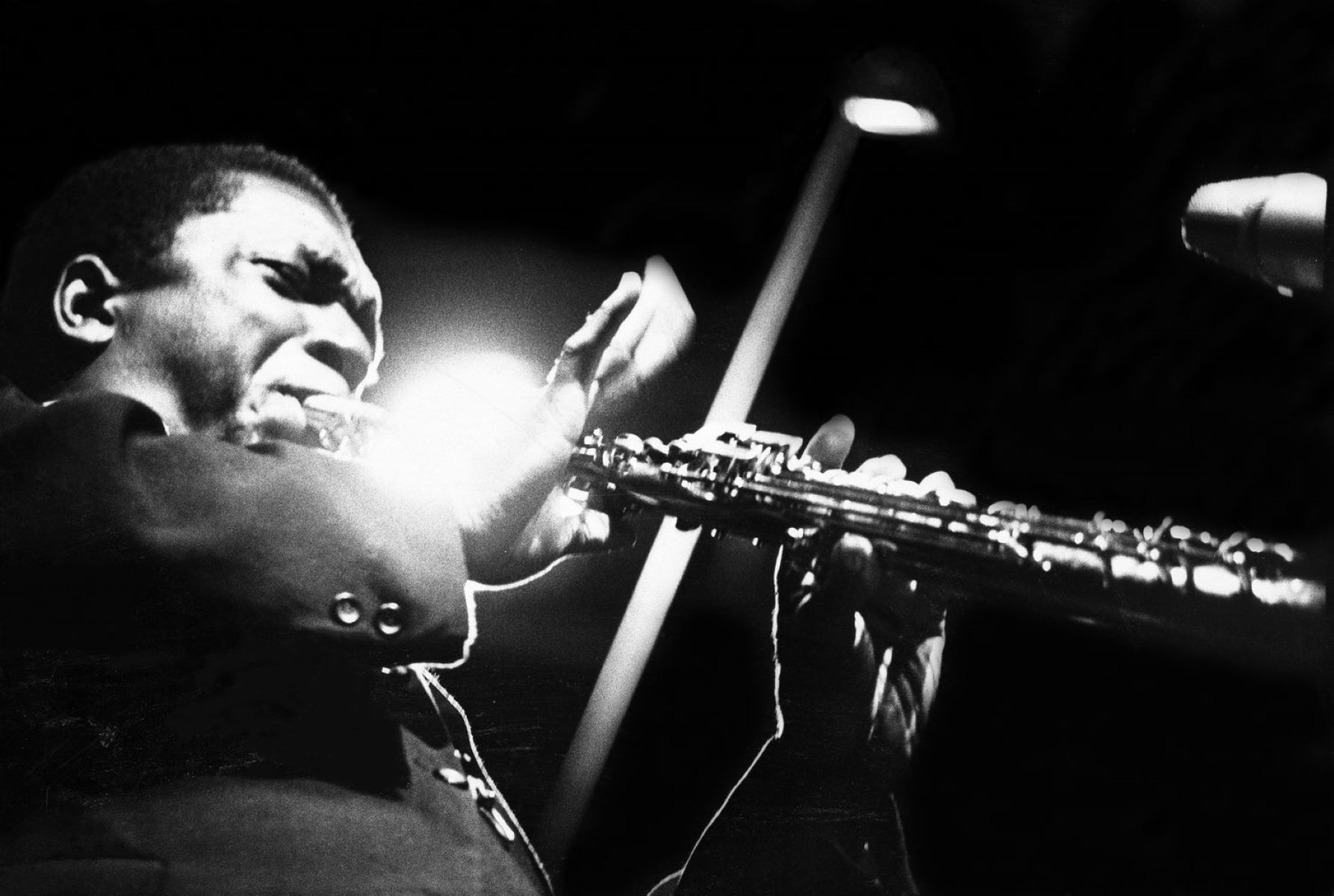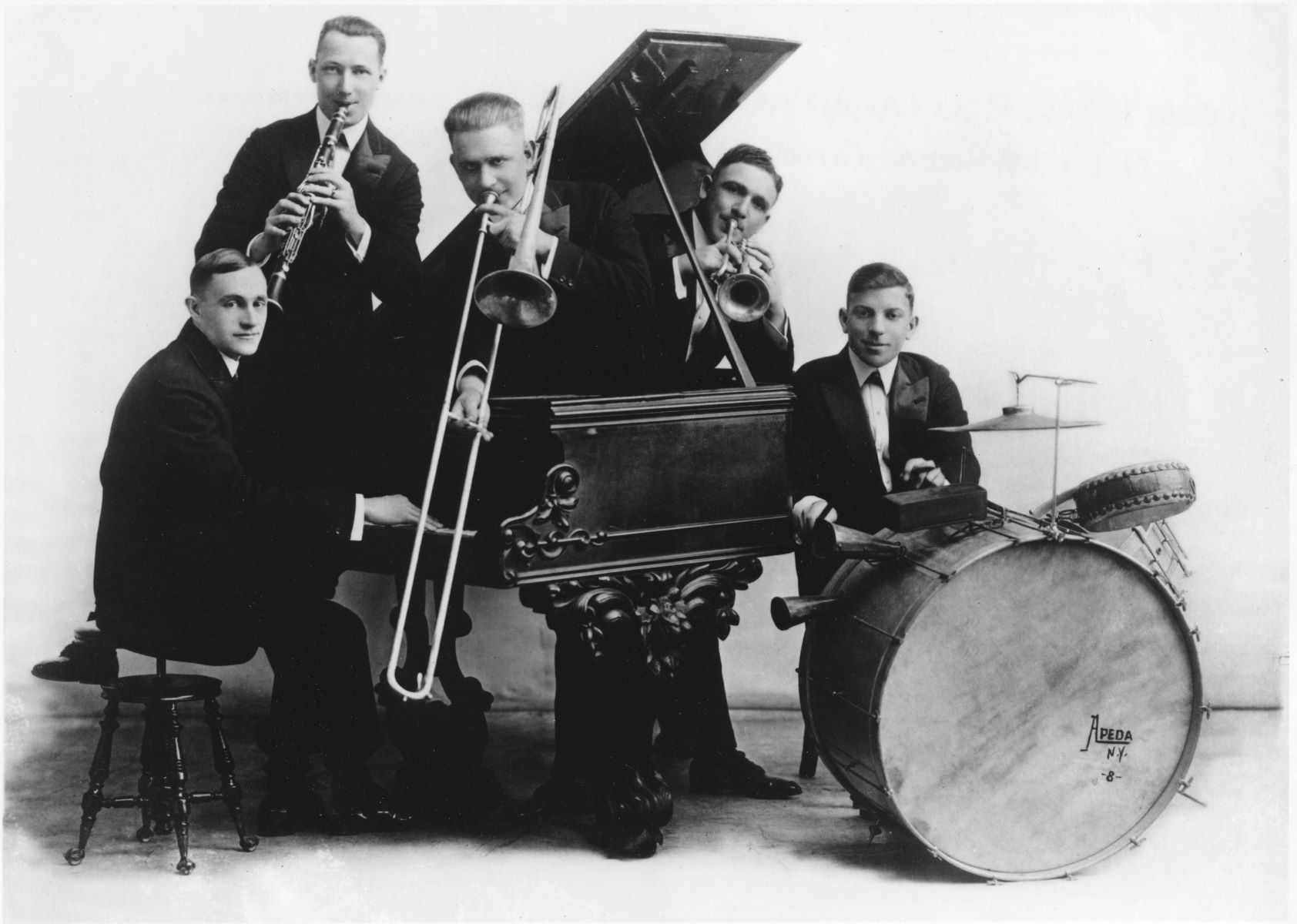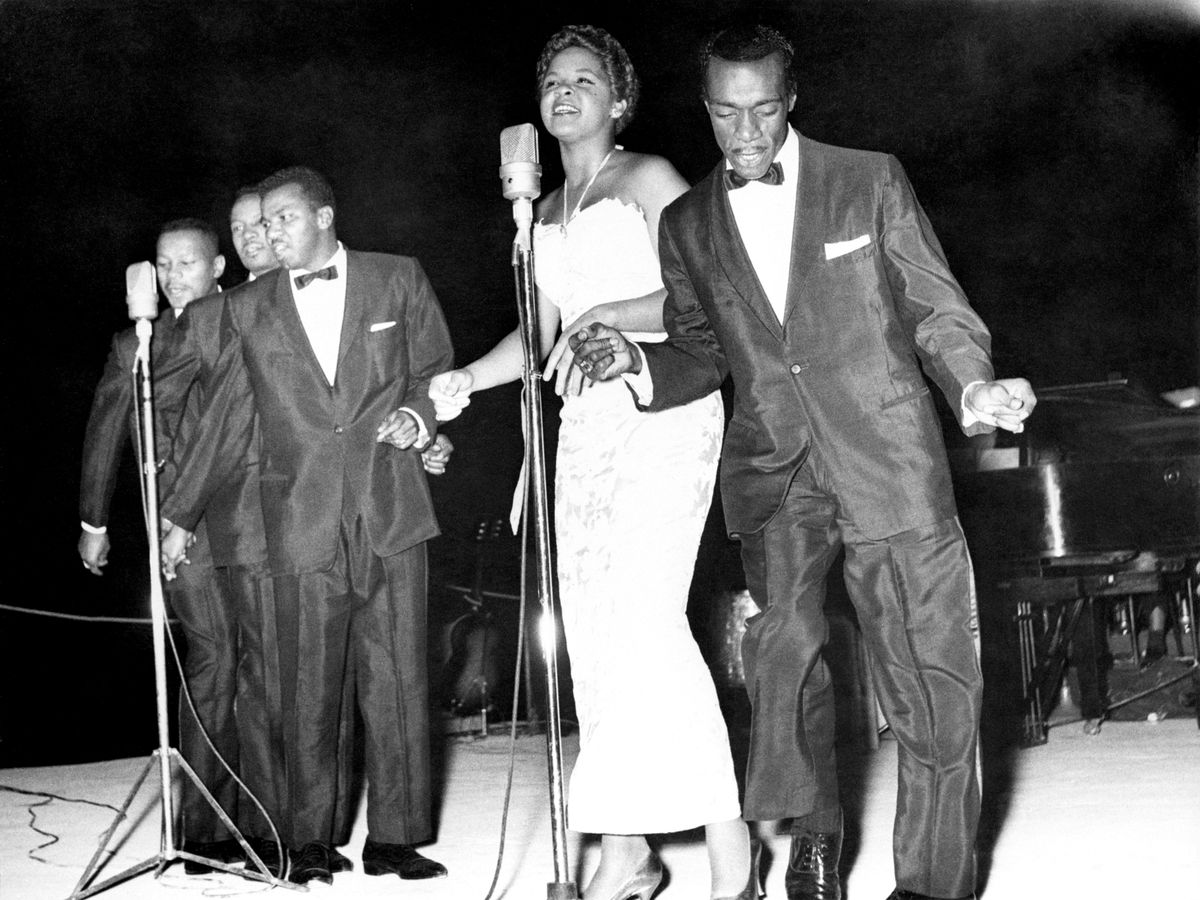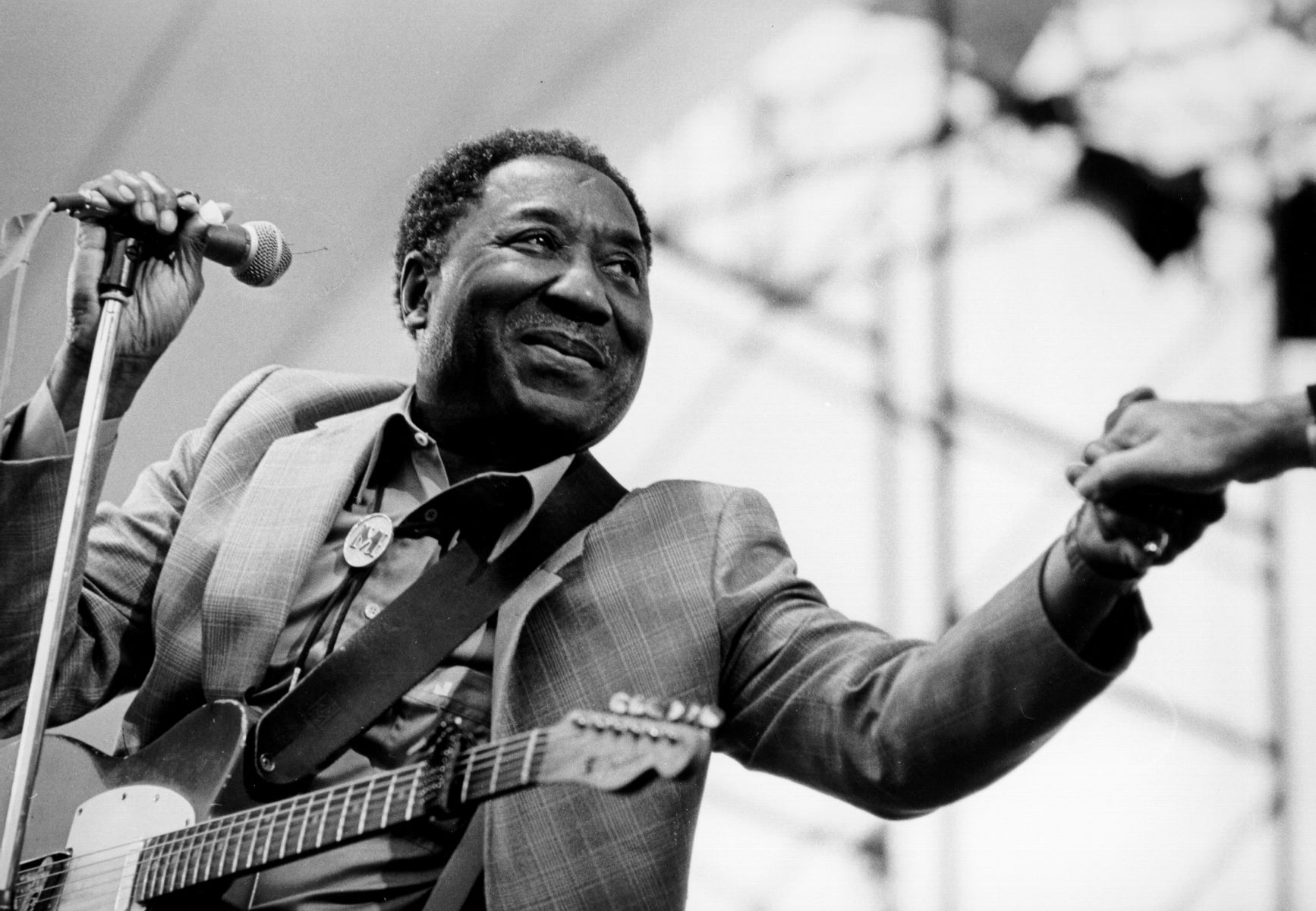

Jazz
How Did Blues Influence Jazz
Modified: January 22, 2024
Discover the profound influence of blues on the development of jazz, from its roots in African-American culture to its evolution into a genre that revolutionized the music industry.
(Many of the links in this article redirect to a specific reviewed product. Your purchase of these products through affiliate links helps to generate commission for AudioLover.com, at no extra cost. Learn more)
Table of Contents
Introduction
Jazz music is deeply rooted in the African American musical tradition and has evolved into a genre known for its improvisation, complex harmonies, and rhythmic intricacies. However, before the birth of jazz, there was another influential genre that laid the foundation for its development – the blues.
The blues emerged in the late 19th century as a form of expression for African Americans, particularly those in the rural areas of the South. It resonated with their experiences of struggle, pain, and resilience in a racially divided society. With its distinctive sound and lyrical themes, the blues quickly spread across the United States, becoming a powerful form of musical expression.
As jazz began to take shape in the early 20th century, it drew heavily from the blues, incorporating many of its elements into its own unique style. This seamless integration of blues influences played a crucial role in shaping the direction and sound of jazz music.
In this article, we will explore the deep connections between blues and jazz, examining how the blues influenced the development of this captivating genre. From the origins of the blues to the impact it had on jazz harmonies, melodies, improvisation, and rhythm, we will delve into the transformative power of this musical symbiosis.
Join us as we unravel the intricate relationship between blues and jazz, tracing the roots of one genre in the rich soil of another. Through exploration and analysis, we will gain a deeper appreciation for the profound influence of the blues on the evolution of jazz music.
Development of Blues
The blues originated in the late 19th century as an amalgamation of African musical traditions and African American experiences. It was born out of the deep-rooted sorrows and hardships faced by the African American community, particularly those in the rural areas of the Southern United States.
Initially, the blues was an oral tradition, passed down through generations as a form of storytelling and expression. It was characterized by its simple structures, typically consisting of three chords and a twelve-bar progression. The lyrics delved into themes of heartbreak, loss, poverty, and the struggles of everyday life.
As the blues gained momentum, it spread across different regions, adapting and evolving along the way. Different styles emerged, such as the Delta blues, which originated in Mississippi and showcased slide guitar techniques, and the Texas blues, known for its prominent guitar solos. The blues also found its way into cities like Chicago, where it took on a more urban and electrified sound.
The popularity of the blues grew rapidly, with artists like Robert Johnson, B.B. King, and Muddy Waters shaping the genre and achieving notable success. Their music resonated with people from all walks of life, transcending racial and cultural barriers.
The blues acted as a powerful form of catharsis, allowing African Americans to express their pain, hopes, and struggles with authenticity and emotional depth. It became a vehicle for cultural resilience and resistance, as well as a means of documenting the social and political climate of the time.
With its raw and soulful nature, the blues laid the foundation for the emergence of jazz, serving as a crucial source of inspiration for countless musicians who would go on to revolutionize the genre. The marriage of the blues with other musical influences gave birth to a new art form that would captivate audiences around the world.
Emergence of Jazz
The roots of jazz can be traced back to the early 20th century in the vibrant and culturally diverse city of New Orleans. The city’s unique blend of African, European, and Caribbean musical influences created the perfect breeding ground for this innovative genre.
Jazz emerged as a fusion of ragtime, blues, spirituals, and other musical styles. It was characterized by its syncopated rhythms, complex harmonies, and improvisational nature. This new form of music captured the energy and spirit of the time, reflecting the vibrant cultural melting pot of New Orleans.
New Orleans’ rich musical heritage played a significant role in the development and popularization of jazz. African rhythms, European classical music, brass bands, and the expressive qualities of the blues all contributed to the distinct sound of this emerging genre.
The city’s famous Congo Square, where enslaved Africans gathered on Sundays to play music and dance, provided a fertile ground for musical exchange and experimentation. This cross-pollination of musical ideas and traditions laid the groundwork for jazz’s innovative spirit.
As jazz continued to evolve, it migrated from New Orleans to other cities, including Chicago, New York, and Kansas City. It gained popularity through the emergence of jazz clubs and the rise of recording technology, which allowed jazz musicians to share their music with a wider audience.
Notable jazz pioneers such as Louis Armstrong, Duke Ellington, and Jelly Roll Morton made significant contributions to the development of the genre. Their unique styles and virtuosic performances brought jazz into the mainstream, captivating audiences with their improvisations and innovative arrangements.
By the 1920s, jazz had become a cultural phenomenon, marking a shift in the music landscape. It represented a break from traditional European styles and embraced the spirit of individual expression and freedom. Jazz became synonymous with the Roaring Twenties and the rise of the “Jazz Age,” influencing not only the music industry but also fashion, dance, and popular culture as a whole.
The emergence of jazz was a testament to the power of musical collaboration and cultural cross-pollination. It showcased the ability of music to transcend boundaries, bringing people together and giving a voice to those who had long been marginalized.
Blues Elements in Early Jazz
As jazz took shape in its early years, it drew heavily from the blues, incorporating many of its essential elements into its evolving sound. The blues provided jazz with a solid foundation, enriching it with its expressive melodies, soulful vocals, and raw emotional depth.
One of the key blues elements that permeated early jazz was its distinctive twelve-bar blues structure. This harmonic progression, consisting of three chords played over twelve measures, provided a framework for improvisation and gave jazz musicians the freedom to explore and innovate within a familiar structure.
Early jazz also embraced the blues’ melodic language. The characteristic bent and sliding notes, known as “blue notes,” found their way into jazz melodies, infusing them with a touch of melancholy and a sense of longing. These blue notes added a unique emotional depth to jazz performances, allowing musicians to convey a wide range of feelings and connect with their audiences on a deeper level.
Furthermore, the blues’ influence on early jazz can be heard in the use of call-and-response patterns, a common feature in both genres. This interactive musical conversation between musicians or between a soloist and a group creates a dynamic and engaging performance that encourages improvisation and collaboration.
Instrumentation also played a significant role in merging the blues and jazz worlds. Brass instruments, which were commonly used in early jazz ensembles, mirrored the expressive qualities of the human voice in blues singing. The wailing, mournful tones of the trumpet or the expressive slides of the trombone helped capture the essence of the blues within the jazz context.
Moreover, the emotional intensity and vocal-like quality of blues singing found its way into early jazz performances. Musicians like Louis Armstrong and Billie Holiday infused their jazz interpretations with the heartfelt and soulful vocal stylings of the blues, creating a profound connection with their listeners.
By incorporating these blues elements, jazz not only paid homage to its musical roots but also expanded its creative boundaries. The fusion of these two genres created a new and exciting sound, allowing jazz to transcend its origins and pave the way for future innovations.
Influence of Blues on Jazz Harmonies
The blues played a pivotal role in shaping the harmonic language of jazz. Its unique chord progressions and harmonic concepts found their way into the jazz repertoire, enriching and expanding the possibilities of jazz harmonies.
One of the most significant contributions of the blues to jazz harmonies is the use of extended and altered chords. In traditional European music, chords are typically built using three notes – the root, third, and fifth. However, the blues introduced additional notes, such as the flat seventh, that gave jazz chords a richer, more complex sound.
Blues harmonies often incorporate dominant 7th chords, which feature a flattened seventh note. These chords have a bluesy quality and provide a sense of tension and resolution. In jazz, dominant 7th chords became a staple, creating a vibrant and dynamic harmonic palette.
Another notable influence of the blues on jazz harmonies is the use of “blue notes” in chord voicings. These blue notes, which are typically the third and seventh notes of the scale, are often flatted, adding a distinct bluesy flavor to the chords. Jazz musicians began incorporating these blue notes into their chord voicings, giving their harmonies a unique and expressive quality.
The blues also opened the door to unconventional chord progressions in jazz. While traditional Western classical music follows a specific set of chord progressions, the blues introduced a more flexible and improvisational approach. Instead of adhering to strict harmonic rules, jazz musicians embraced the freedom to experiment with non-traditional progressions, adding unexpected chromatic chords and substitutions.
Furthermore, the blues’ influence on jazz harmonies can be seen in the use of modal playing. Modal jazz, which gained prominence in the 1950s and ’60s, drew inspiration from the blues’ modal characteristics. Modal playing is based on scales or modes rather than traditional major or minor chord progressions, creating a different tonal color and harmonic texture.
Through the incorporation of extended chords, blue notes, unconventional progressions, and modal playing, jazz harmonies were transformed by the blues. This integration allowed for greater expressiveness, expanded harmonic possibilities, and contributed to the distinctive sound and sophistication of jazz music.
Influence of Blues on Jazz Melodies
The blues had a profound impact on the melodies of jazz, infusing them with its expressive and emotive characteristics. The melodic influence of the blues can be heard in the bending and sliding of notes, the use of blue notes, and the incorporation of call-and-response patterns within jazz compositions.
One of the distinct features of blues melodies is the use of bending and sliding notes. This technique involves subtly altering the pitch of a note by either bending the string (in the case of string instruments) or using embouchure and slide movements (in the case of wind instruments). Jazz musicians adopted this technique from the blues, adding a touch of expressiveness and fluidity to their melodic lines.
Additionally, the use of blue notes in jazz melodies is a direct influence of the blues. Blue notes are the notes that are modified slightly from the standard major or minor scale, typically the third, fifth, and seventh notes. These bluesy tones add a unique flavor to jazz melodies, providing a subtle twist and injecting them with an emotive quality.
Call-and-response patterns are another significant element borrowed from the blues. This musical dialogue involves one musical phrase or line being followed by a complementary response. Jazz musicians incorporated this technique, creating engaging conversations between different instruments within a piece. This interplay adds dynamic and interactive elements to jazz melodies, captivating listeners and showcasing the improvisational talent of the musicians.
Furthermore, the blues’ influence on jazz melodies can be heard in the use of repetition and variation. Both genres employ repetitive motifs or phrases, which serve as the foundation of the melody. Jazz musicians took this idea and expanded upon it, incorporating variations and improvisations that allowed for individual expression and creativity.
The blues also contributed to the development of jazz standards – a collection of popular and frequently performed songs in the jazz repertoire. Many of these standards have blues-inspired melodies, incorporating the expressive qualities and melodic structures found in the blues tradition.
Through the integration of bending and sliding notes, blue notes, call-and-response patterns, repetition and variation, and the creation of jazz standards, the blues left an indelible mark on jazz melodies. This fusion of styles and techniques not only gave birth to new and captivating melodies but also paved the way for the evolution of jazz as a distinctly innovative and expressive genre.
Blues Influence on Jazz Improvisation
One of the most profound ways in which the blues influenced jazz is through its impact on improvisation. Improvisation is a central element of both genres, and the blues provided a rich foundation for jazz musicians to explore and expand their improvisational skills.
The blues provided a familiar and flexible structure for jazz improvisation. Its twelve-bar blues progression served as a framework within which jazz musicians could freely explore their musical ideas. The repetitiveness of the blues form allowed for a level of comfort and familiarity, providing a solid foundation from which improvisation could take place.
The use of blue notes in the blues also had a significant impact on jazz improvisation. Jazz musicians integrated these bluesy tones into their improvisations, adding a sense of soulfulness and expressiveness to their playing. The incorporation of blue notes allowed for nuanced and emotive improvisations, giving jazz musicians a wider palette of tones and textures to work with.
Moreover, the blues’ influence on jazz improvisation can be heard in the use of call-and-response patterns. This interactive musical dialogue, in which one musician’s phrase is answered by another, provides a dynamic and engaging improvisational style. Jazz musicians adopted this technique from the blues, creating spontaneous conversations and exchanges within their improvisations.
Additionally, the blues’ emphasis on individual expression and storytelling deeply influenced jazz improvisation. The blues served as a means of personal expression for African Americans, allowing them to share their joys, sorrows, and experiences. Jazz musicians carried this tradition forward, using improvisation as a vehicle to tell their own stories and convey their emotions through their instruments.
The blues’ influence on jazz improvisation also extended to the concept of “playing the changes.” In the blues, musicians navigate through different chords and progressions, adapting their improvisations to match the underlying harmonies. This approach was carried over to jazz, where musicians developed the ability to navigate complex chord changes while maintaining a sense of coherence and musicality in their improvisations.
Through its structure, use of blue notes, incorporation of call-and-response patterns, focus on individual expression, and the concept of “playing the changes,” the blues laid the groundwork for jazz improvisation. It provided a framework and vocabulary that allowed jazz musicians to push the boundaries of their creativity and innovation, contributing to the improvisational spirit that defines jazz as a genre.
Blues Influence on Jazz Rhythm
The blues had a profound influence on the rhythmic aspects of jazz, shaping its grooves, syncopation, and overall feel. The rhythmic characteristics of the blues, with its emphasis on swing and a relaxed yet vibrant pulse, became integral to the development of jazz rhythm.
One of the key rhythmic contributions of the blues to jazz is the concept of swing. Swing refers to the rhythmic feel created by playing notes in a slightly uneven manner, often with a longer first note and a shorter second note in each pair. This rhythmic groove, derived from the African American musical tradition, added a sense of buoyancy, energy, and forward momentum to jazz performances.
The blues also helped lay the foundation for syncopation in jazz rhythms. Syncopation is the deliberate shifting of accents to weak beats or off-beats, creating a sense of rhythmic tension and complexity. The blues’ use of syncopation, particularly in the vocal and instrumental phrasing, served as a model for jazz musicians to incorporate this rhythmic element into their improvisations and compositions.
Furthermore, the blues influenced the concept of “playing in the pocket” in jazz. “Playing in the pocket” refers to the ability of musicians to maintain a steady and cohesive rhythmic groove, locking in with one another to create a tight and cohesive sound. This rhythmic cohesion, often achieved by paying close attention to the subtle nuances of timing and dynamics, was a hallmark of both blues and early jazz performances.
Additionally, the blues’ rhythmic influence can be heard in the use of call-and-response patterns in jazz rhythm sections. Just as the blues utilized call-and-response between vocalists or soloists, jazz musicians incorporated this rhythmic conversation between different instruments within the ensemble. This interplay between different rhythmic elements added complexity and dynamics to jazz performances.
Moreover, the blues’ impact on jazz rhythm can be seen in the development of shuffle and swing rhythms. The shuffle rhythm, characterized by a swung eighth-note feel, can be traced back to the blues, where it was a fundamental part of the groove. The swing rhythm, an essential element of jazz, evolved from the rhythmic sensibilities of the blues, combining syncopation, swing feel, and a sense of groove.
Through its contribution to swing, syncopation, “playing in the pocket,” call-and-response patterns, and the development of shuffle and swing rhythms, the blues played a critical role in shaping the rhythmic landscape of jazz. Its influence on jazz rhythm added a layer of groove, energy, and cohesiveness that defines the genre to this day.
Conclusion
The blues and jazz have an intertwined history, with the blues serving as a fundamental influence on the development of jazz music. From its origins in African American communities to its evolution into a powerful and expressive genre, the blues laid the groundwork for the emergence of jazz.
The blues influenced jazz in various ways, shaping its harmonies, melodies, improvisation, and rhythm. The blues’ impact on jazz harmonies can be heard in the use of extended and altered chords, while its melodic influence is evident in the incorporation of bending and sliding notes and the use of blue notes. The blues’ call-and-response patterns and emphasis on individual expression deeply influenced jazz improvisation, allowing musicians to tell their own stories through their instruments.
Furthermore, the rhythmic characteristics of the blues, such as swing and syncopation, became integral to jazz, creating a lively and infectious groove. The blues also influenced the concept of “playing in the pocket,” emphasizing the importance of rhythmic cohesion and tight ensemble playing. Shuffle and swing rhythms, rooted in the blues, became defining elements of jazz music.
The fusion of the blues and jazz resulted in a genre that transcends boundaries, connecting people through its emotional depth, innovative spirit, and cultural resonance. It is a testament to the power of music to drive societal change, tell meaningful stories, and bring diverse communities together.
As we reflect on the influence of the blues on jazz, we gain a deeper appreciation for the rich heritage of these genres. The blues laid the foundation for the emergence of jazz, providing a musical language that continues to inspire and captivate audiences today. The indelible mark left by the blues on jazz serves as a reminder of the interconnectedness of musical genres and the transformative power of artistic expression.


